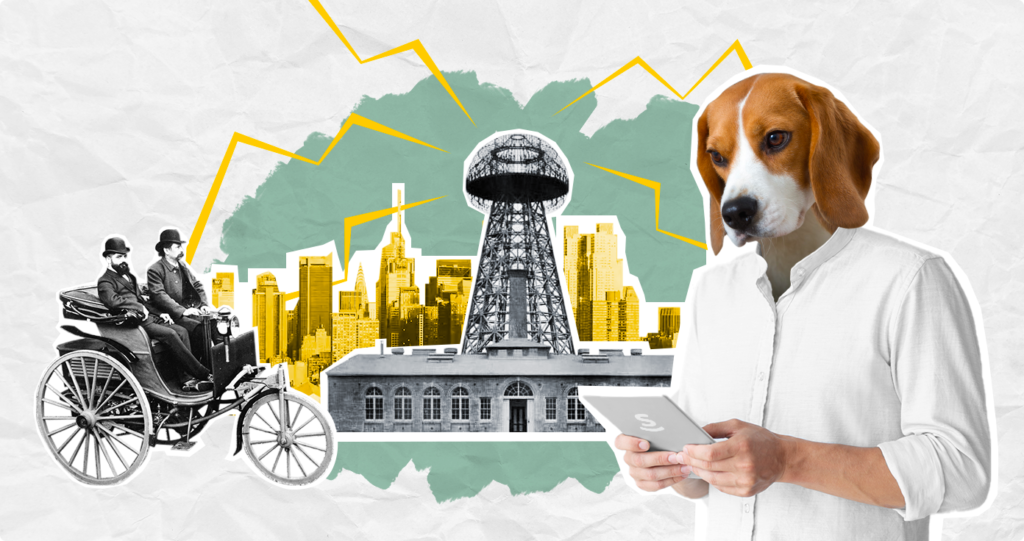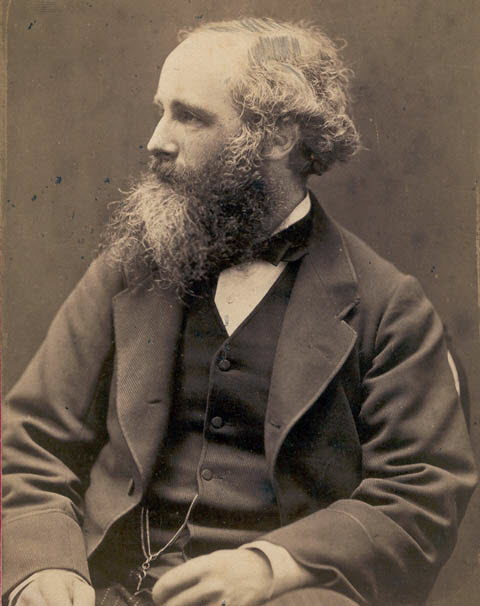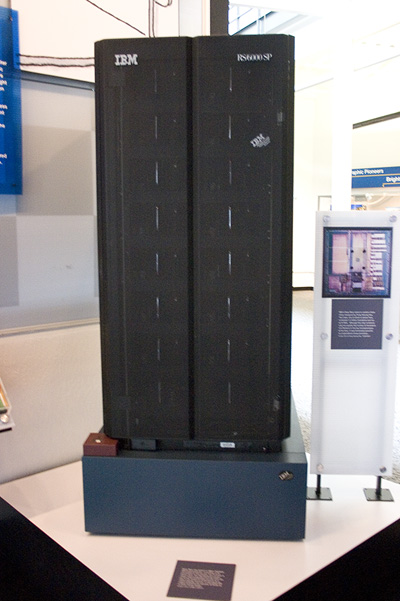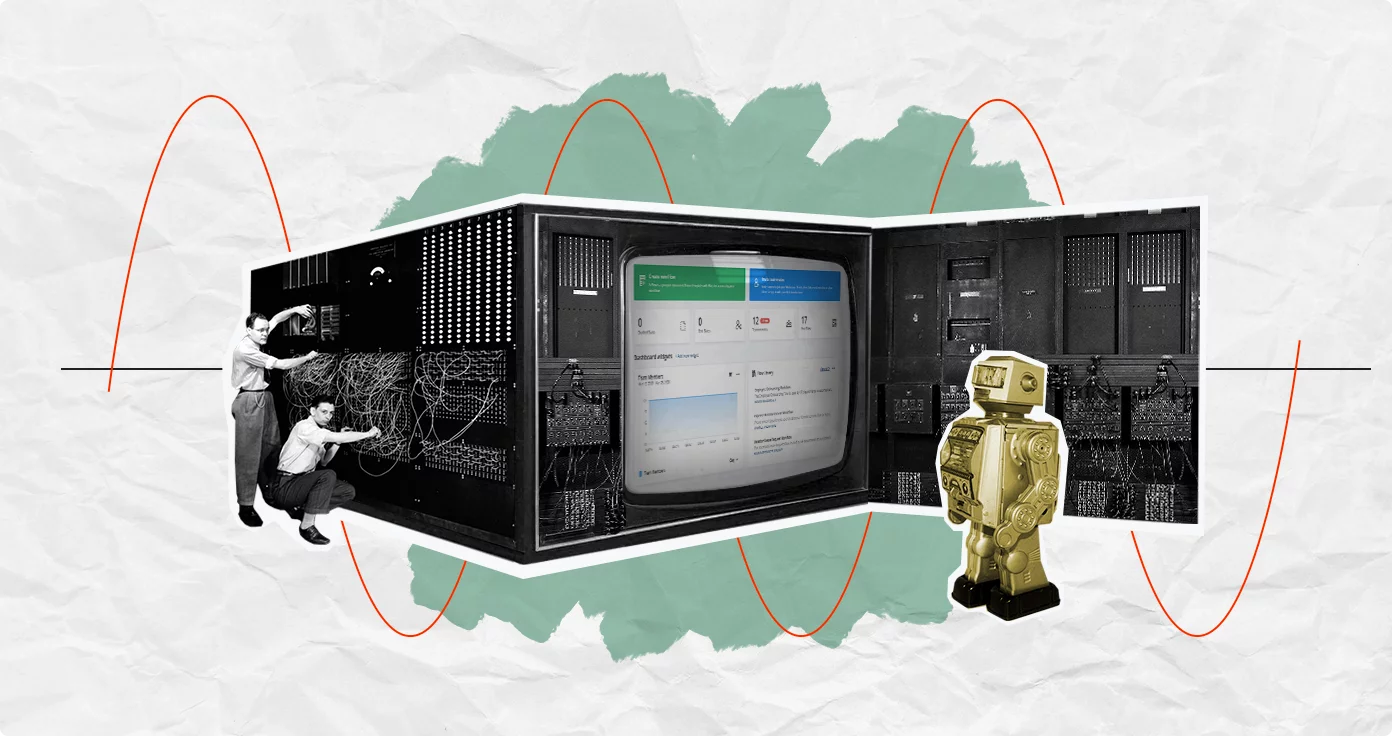
In 1898, Nikola Tesla held a demonstration of his remote-controlled mobile mechanisms in New York’s Madison Square Garden. It was probably the first time people questioned whether robots could replace humans and threaten their livelihoods. Today, with over a century of a mind-blowing history of automation behind us, the question still persists.
The COVID-19 pandemic has accelerated digital transformation leading to the adoption of automation technology across multiple areas of human life, including business. Today, teams and companies of all sizes — from small and medium-sized businesses to large enterprises — are striving to achieve business automation success to ensure resilience and business continuity.
We have industrial robots and no-code software bots in charge of customer service. We keep AI-driven devices in our back pockets and use actual robots to clean our increasingly smart home. Whether it’s a fully-automated advanced robotic process automation app or a dishwashing machine, each of these things use automated algorithms in one way or another. Algorithms and artificial intelligence even tell us what to wear and watch.
But how did it happen? Are we still in control of our lives? What is our place in this automated world? And what are the lessons we still have to learn to get the most out of automation for our businesses and everyday lives? When did automation start?
Let’s take a deep dive and find the answers to these and other questions in this article.
When did automation start?
We believe it would be fair to say that the history of automation is just as old as the history of mankind. The very idea of having a mechanism that would operate in a predetermined way and perform specific actions, while you’re sipping on a cocktail is probably as old as the world itself. In fact, it was Homer, the poet, not the cartoon character, who created the term ‘automation’ back in ancient Greece while talking about a self-moving chariot.
It’s quite clear, however, that without proper engineering skills and knowledge, people weren’t capable of designing more sophisticated automation tools. And so, the real history of automation as we understand it today starts much closer than Homer. After all, both the Greeks and the Romans used their inventions for entertainment rather than improving their daily tasks.
Advancements in mill machinery during the 9th century
Significant progress was made in mill machinery during the 9th century, with a focus on harnessing renewable energy sources for various mechanical processes. Two prominent types of mill machinery, watermills, and windmills, played pivotal roles in this era.
The earliest documented windmill design, designed for practical applications, can be traced back to the 7th to 9th century, courtesy of Persian inventors. These innovative windmills were initially used to grind grain but later evolved to serve a wide array of mechanical functions.
While watermills provided more power relative to their size, windmills found utility in regions lacking access to flowing water. Over time, both technologies underwent continuous improvements and were adopted worldwide. They played a crucial role in reducing manual labor requirements across various industries, including:
1. Hammermills
2. Sawmills
3. Paper mills
4. Ore-crushing mills
5. Tool-sharpening mills
These developments in mill machinery marked a significant step forward in the mechanization of labor-intensive processes, contributing to increased efficiency and productivity across diverse industries.
The Industrial Revolution and the appearance of the first computer technology
It wasn’t until the Industrial Revolution of the early 19th century that the automation timeline finally started making a significant impact on people’s lives. The earliest examples of automation as we understand it today coincide with the implementation of industrial machinery somewhere around the early 1880s.
One of the most notable breakthroughs in the history of automation was Joseph Jacquard’s invention of the so-called ‘punch cards’ in 1801. These cards were used to tell mechanical looms what pattern to make. Using this technology, Charles Babbage began developing the concept of the first-ever programmable computer, which he later called The Analytical Engine. Babbage’s friend Ada Lovelace, in the meantime, created the first-ever computer program, which would have run on his machine.
The role of control theory in the development of automation
In the 19th century, control theory emerged as a branch of control engineering and applied mathematics, dedicated to managing dynamical systems within engineered processes and machinery. Its primary objective is the formulation of models or algorithms that govern the application of input commands to guide a system toward a desired state. In doing so, it aims to minimize any undesirable characteristics like delays, overshooting, or steady-state errors while maintaining stability. Additionally, control theory often strives to attain optimal performance.

The theoretical basis for understanding control theory took shape when James Clerk Maxwell published a paper “On Governors” in 1868. Maxwell’s publication covered the operation of governors, which were already employed to regulate the speed of windmills during that era. Within his scientific discourse, Maxwell not only described these governors but also delved into the phenomenon of self-oscillation, highlighting instances where system delays could lead to excessive compensation and unstable behavior.
Strides out of automation history
The entire history of automation is not all success, however. A 1966 negative report about Natural Language Processing (a subsection of artificial intelligence) caused the so-called ‘AI winter‘ and delayed further development of automation and AI techniques for over three decades.

Lastly, another big step forward in the history of the automation timeline took place in the 1990s. An artificial intelligence called ‘Deep Blue’ defeated Garry Kasparov at chess in 1997.
NASA launched its first autonomous robotics system on the surface of Mars. While at the same time, web crawlers and other AI-based data extraction programs became a crucial part of widespread internet use. The 1990s also marks a time when the history of automation was thoroughly intertwined with business process automation and management.
In the early 2000s, automation development went quiet again for a while until the release of Apple’s Siri. Siri de-facto triggered a new age of AI-driven assistants. It also finally shifted the whole movement away from physical robots toward the development of robotic process automation and AI software.
The evolution of home automation: From sci-fi dreams to everyday reality
Not too long ago, the idea of home automation felt like something plucked from the pages of a science fiction novel. It was an intriguing vision where our homes could anticipate human needs, respond to commands, and make our lives infinitely more convenient. But today, that once-distant dream has firmly rooted itself in our everyday lives, reshaping the way we interact with our homes.
The evolution of automation for homes started with modest innovations, such as programmable thermostats and remote-controlled garage doors. These early forays laid the foundation for the smart home we have today. With the rise of the internet and smartphones, the possibilities for home automation expanded dramatically. We saw the emergence of smart speakers like Amazon Echo and Google Home, ushering in an era where we could effortlessly control our lighting, climate, and entertainment systems with a few spoken words.
As technology continued to march forward, the smart home ecosystem grew ever more sophisticated. Today, homeowners can automate nearly every facet of their living spaces. From intelligent lighting and security systems to voice-activated virtual assistants that not only manage our schedules but also answer our curious inquiries, home automation systems have seamlessly woven itself into modern life.
The Internet of Things (IoT) played a pivotal role in this journey, linking devices and appliances to a central hub, enabling them to communicate seamlessly and be controlled effortlessly. With ongoing advancements in artificial intelligence and machine learning, the future of home automation holds the promise of even greater convenience and efficiency, erasing the boundaries between the realm of science fiction and our everyday reality.
The current landscape of AI technologies
Artificial Intelligence (AI) has experienced remarkable advancements in recent years, with a multitude of AI technologies currently in use across various industries. Let’s explore some of the cutting-edge AI technologies that are shaping the present and paving the way for the future.
1. Chatbots and Natural Language Processing (NLP):
- ChatGPT: ChatGPT enables natural and human-like conversations, providing chatbots and virtual assistants with the ability to understand and respond to text and voice inputs in a conversational manner.
- NLP Models: Beyond ChatGPT, there are various NLP models such as BERT, GPT-4, and RoBERTa that excel in understanding and generating human language, making them valuable for tasks like sentiment analysis, language translation, and content generation.
2. Computer vision:
- Convolutional Neural Networks (CNNs): Deep Convolutional Neural Networks (DCNNs) have revolutionized image analysis, enabling applications like facial recognition, object detection, and image classification. These networks have paved the way for autonomous vehicles and advanced surveillance systems.
- Generative Adversarial Networks (GANs): GANs are used to generate realistic images, videos, and 3D models. They find applications in art, design, and gaming.
3. Autonomous systems:
- Self-driving cars: AI algorithms, including deep reinforcement learning and computer vision, power autonomous vehicles to navigate and make decisions in real-time, enhancing road safety and efficiency.
- Drones and robotics: Autonomous drones and robots leverage AI to perform tasks like surveillance, search and rescue, and automated manufacturing.
4. Healthcare and life sciences:
- AI in diagnostics: AI systems, including deep learning and pattern recognition, help in early disease detection, medical imaging analysis, and personalized treatment recommendations.
- Drug discovery: AI accelerates drug discovery by analyzing vast datasets to identify potential drug candidates, reducing research and development timelines.
5. Virtual and Augmented Reality (VR/AR):
- AI-powered VR/AR: AI enhances virtual and augmented reality experiences by rendering realistic environments, tracking user movements, and offering personalized content.
6. Recommendation systems:
- Collaborative filtering: Recommendation algorithms like those used by Netflix and Amazon analyze user behavior to suggest personalized content and products.
7. Speech recognition:
- Automatic Speech Recognition (ASR): ASR technology, like that used in voice assistants, converts spoken language into text, facilitating voice commands and transcription services.
8. AI in finance:
- Algorithmic trading: AI algorithms process financial data to make high-frequency trading decisions, improving market efficiency.
- Risk assessment: Machine learning models assess credit risk, fraud detection, and market forecasting.
9. AI in education:
- Personalized Learning: AI tailors educational content and pathways for individual students, optimizing learning experiences.
10. AI in cybersecurity:
- Anomaly detection: AI systems monitor network traffic and identify unusual behavior patterns, aiding in the detection of cyber threats.
The current AI landscape is a testament to the rapid evolution of technology, with AI technologies playing a pivotal role in reshaping industries, improving efficiency, and opening new frontiers of innovation. As these technologies continue to evolve, they hold the promise of further transforming how we live, work, and interact with the world.
What are automation’s current challenges?
If you think about it, we live in an exciting time. We have blockchain technologies, cyber surgeries, automated detection of fake data on social networks, robots and AI.
In the video below, we cover the pros and cons of automated business processes, as well as the common myths rooted in automation history and valuable tips:
For the first time in the history of automation, automated processes are actually available to everyone, allowing organizations to focus on what’s really important: customers, career, and business success. Automated methods are getting more and more polished and efficient, with automation software becoming a necessity rather than a luxury.
Of course, it’s still far from being perfect. Siri doesn’t always know the answer, Alexa occasionally mishears us and we all saw what a failure Microsoft’s Tay turned out to be.
Despite all the shortfalls in automation history, AI and automation are more versatile today than ever before, with a bunch of exciting automated business process trends knocking on our doors:
- No-code automation and APIs
Most businesses today use APIs to integrate third-party apps and services. At first APIs have been expensive and hard to onboard, leaving little space for team collaboration. As the API technology perfected, it has proven to be an efficient tool that allows for integrating no-code workflows into diverse business operations seamlessly. This evolution in API technology has opened up new avenues for businesses, enabling them to effortlessly blend various software solutions without the need for complex coding processes.
As a result, team collaboration has significantly improved, breaking down the barriers that once hindered smooth integration. The future of automation is likely to be shaped by these advancements, where APIs will continue to play a pivotal role in enhancing collaboration, streamlining workflows, and fostering innovation. Businesses can now harness the power of APIs to create customized, interconnected systems, ensuring a more agile, efficient, and collaborative future in the realm of automation.
- End-to-end workflows
End-to-end workflows deliver a full data lifecycle while supplying all the necessary components along the way. In simple words, it means that your entire team collaborates on workflows within a single workspace. No more budgeting for multiple service vendors or integrations between them! The end-to-end approach gives you the ability to build even the most complex business processes without having to integrate multiple products.
- Human augmentation
Human/staff augmentation is a business strategy that consists of evaluating the existing employees and determining what additional skills they require. Augmentation’s most significant advantage is that it leverages existing resources and utilizes an outsourced workforce. Today, the need to quickly and flexibly address workflow issues and bottlenecks is as relevant as ever before. Staff augmentation can help companies manage most of the tasks with their regular internal teams and with minimal assistance from IT. airSlate’s recent report for HR executives revealed there’s still a giant opportunity to automate repetitive tasks.
No matter how automated your business processes are, they’re still reliant on the unique architecture of your business. And thus require human supervision. That’s why we’re pretty confident that the future of work will still involve humans in one way or another — with the focus shifting toward what technology can do WITH humans rather than WITHOUT them.
What can we learn from the history of automation?

The history of automation, despite a few bumps along the way, is a history of success. It continues to evolve, providing us with more innovative AI solutions, such as GPT-4. Technology has finally reached the point in the automation timeline where it’s simply cheaper, faster, and more reliable to have mundane tasks completed via automated tools.
But how can you get the most out of automation?
First of all – we have to learn
Humans have always been a part of automation history. However, we have gone from ‘creator’ to an inseparable part of automation. And today, without knowing how to navigate automation, we still don’t know how to get the most out of it.
A valuable piece of advice is not to focus solely on the developments in your own industry, of course learn about them but broaden your horizon and investigate more. Modern-day document workflow automation and AI technologies are deeply connected with each other. Without knowing how to apply them, businesses will struggle. As SMBs navigate the landscape of recovery, the rapid integration of automation and AI tools is becoming not just a trend but a necessity. Check out the full report for details.
By learning automation you will understand how to apply the right process automation strategy to your company’s workflows, calculate ROI, and how to deploy solutions inside your organization.
The airSlate Academy teaches students everything they need to know about the future of work trends and the emerging industry of digital transformation, and gives them a real chance to become a pioneer in workflow automation. Moreover, by acquiring skills in new technologies, you get a unique opportunity to make yourself future-proof, enhance your career and business development.
That’s actually why we wrote this article. Learning the history of automation is a vital part of learning modern document workflow automation trends.
It’s important to know how to choose
Many inventions through the automation timeline failed, and many more have yet to prove themselves.
Today, we are at the stage of the automation timeline when we have plenty of platforms and tools that streamline our daily operations as well as enhance and develop our business processes. The main point is that there are plenty of them and that they’re pretty expensive so it becomes really hard to choose the right tools.
So what should you consider when choosing a business automation solution?
Consider these four key points before investing in workflow vendors if you’re planning to automate in the future:
- How do you plan to on-board your workflow participants?
- How many of your workflows can you implement eSigning, automation, conditional routing, integrations, dynamic webforms, contract negotiation or document generation to?
- How long will it take you to implement your new workflow or change it?
- Consider your company’s future needs because workflows can change or become more complex.
The points above tell us that what we need is flexibility. We’ve already mentioned the two main automation timeline trends: no-code automation and end-to-end workflows. These trends usually come together.
An end-to-end workflow is a process that delivers a full document and data lifecycle while supplying all the necessary components along the way.
However, like we mentioned before, integrations are almost unavoidable and can be expensive when attempting to automate your workflow using any of the popular workflow automation software solutions today.
A lack of flexibility is where you find the biggest weakness in major workflow providers. Any time your workflow needs a new feature, you’ll have to pay for integrations from a third-party vendor.
That’s why, when you really look under the hood, end-to-end workflow automation is extremely expensive, if not impossible. By investing your time and money into such a solution, you just distance yourself from what your business really needs: an adjustable and transparent document and data workflow at a reasonable price.
With business automation platforms like airSlate, it’s the user who adjusts everything, no engineering support required. In this case end-to-end workflows feature:

Turnkey CRM and cloud integrations

An online document editor and HTML form builder

eSignatures

Filled-in data collection

No-code workflow routing and automation

Contract negotiation and management

Process analytics

Easy-to-integrate API

Document generation
Get all the tools you need to complete and automate your workflow without paying extra for third-party solutions and API integrations.
Finding the perfect remote workflow automation tool for your business won’t change your behavior or processes, it’ll enhance them. And that’s the point the history of the automation timeline leads us to. Automation is not something to be scared of, it’s something that you create and use to empower yourself and your business.
Three things we now know for sure
- Whether we like it or not, the future WILL BE automated. The future of automation is likely to revolutionize industries by increasing efficiency and reducing human labor in repetitive tasks. Low-code and no-code technologies are irreplaceable for companies looking to sustain their success into future automation timelines. Learning automation will help your business grow.
- The feared robot takeover seems to be postponed once again. Bots and AI will take the brunt of the most monotonous, technical work, leaving all creative and people-oriented activities for humans.
- It’s digital natives who will rule the game soon. Most of today’s university graduates are so-called ‘digital natives’ or ‘citizen developers’.
As exciting as current and future tech is, we shouldn’t forget the automation history before us or the work it has taken to get us where we are today. After all, the way things are going, our today will become our past in the blink of an eye.
- When did automation start?
- Advancements in mill machinery during the 9th century
- The Industrial Revolution and the appearance of the first computer technology
- The role of control theory in the development of automation
- Strides out of automation history
- The evolution of home automation: From sci-fi dreams to everyday reality
- The current landscape of AI technologies
- What are automation’s current challenges?
- What can we learn from the history of automation?
- But how can you get the most out of automation?
- Three things we now know for sure

